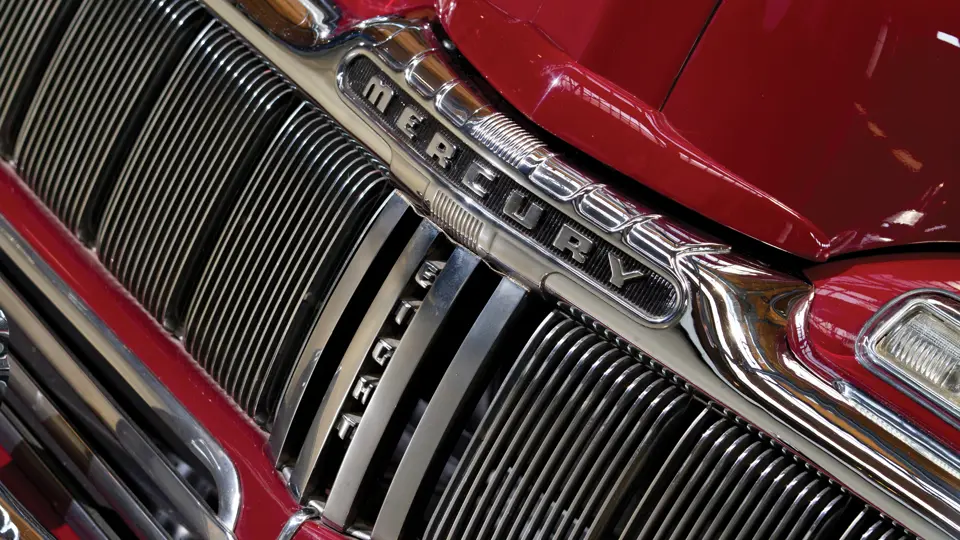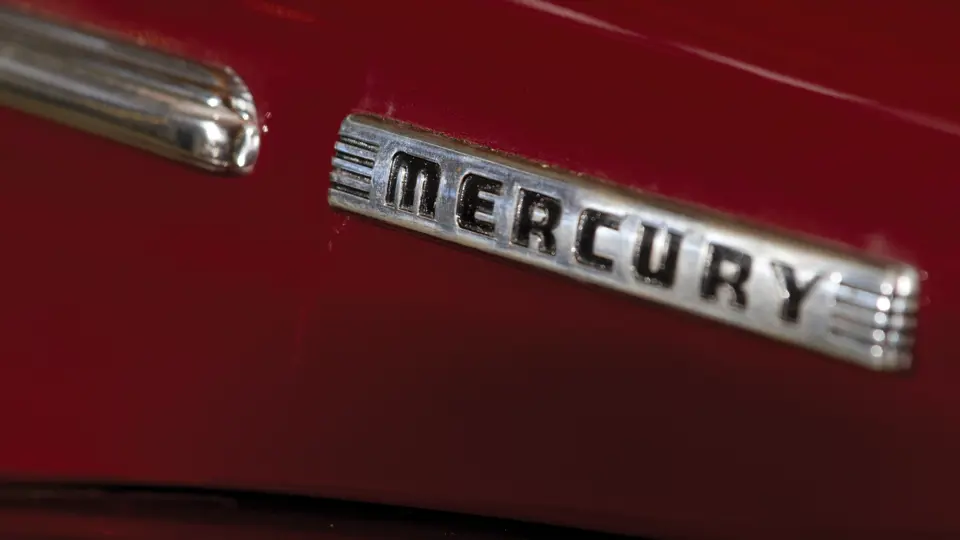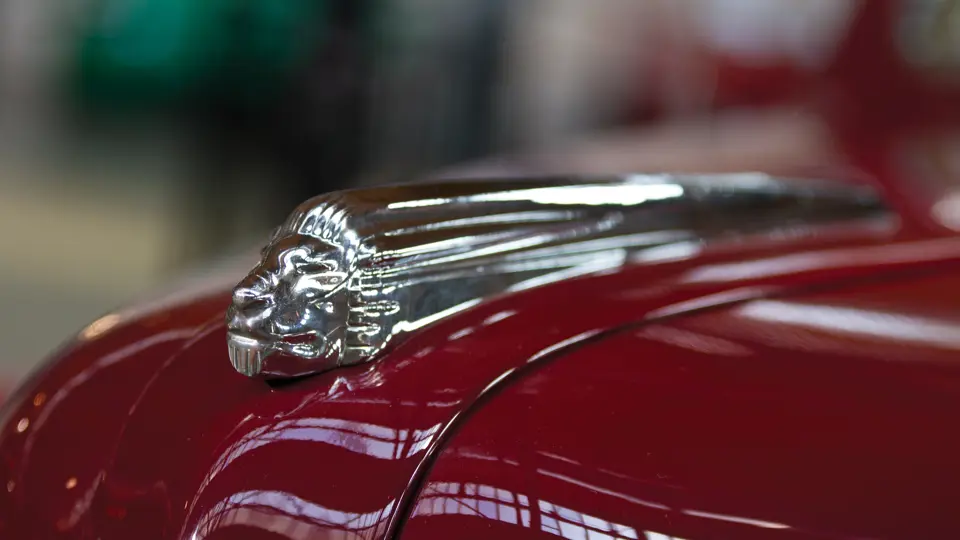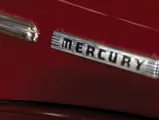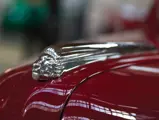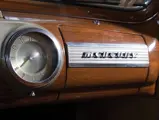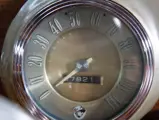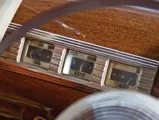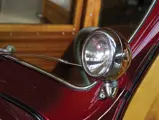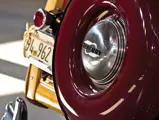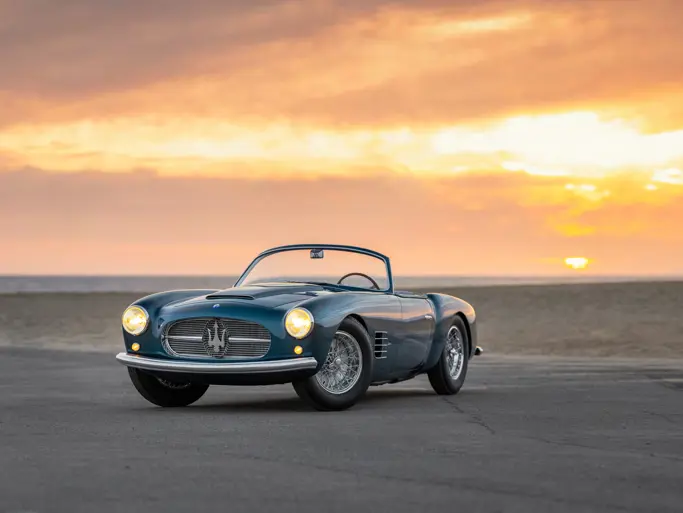Series 79M. 100 bhp, 239.4 cu in “flathead” V-8 engine, three-speed manual transmission, solid front axle and live rear axle with transverse semi-elliptic leaf springs, and four-wheel hydraulic drum brakes. Wheelbase: 118"
• Classic combination of Midland Maroon over tan leather interior
• Flathead V-8 power
It was all America’s auto industry could do to convert from wartime production back to civilian automobiles. There was certainly no time for restyling and new tooling. Not that it mattered; the demand for new cars far outstripped the industry’s capacity. Mercury, like Ford, had new “spring models” ready for April 1947. Unlike Ford, however, Mercury’s changes principally concerned the grille, which added chrome plating to the heavy surround on the upper section. The body side trim was truncated on the after portion of the hood, where a new “MERCURY” nameplate was added. Hubcaps were redesigned and given black lettering and white accents, and heavy wingtips were added to the front bumper. Interior changes were less extensive on station wagons than other body styles, amounting to new instrument faces and a redecorated steering wheel. Ten new exterior color choices were also offered.
Ads promoted Mercury as giving you “more of everything: more beauty, more comfort, and more liveliness.” Many consider this one of the last “charismatic” Mercury models, as it was the second to last year the wagon would use wood as part of its structure. After 1948, Ford Motor Company wagons employed steel body structures with wood trim. Wood bodies were produced of maple or birch framing over mahogany paneling, by some 300 craftsmen at Ford’s Iron Mountain facility. Carrying model designation 79M79, the Mercury Station Wagon weighed 3,571 pounds and carried a base price of $2,207. All Mercury models were powered by the ubiquitous 239-cubic inch flathead V-8, producing 100 horsepower, and a standard three-speed manual transmission. This made them easy to maintain, as well as offering excellent availability of parts and club support. This woodie is finished in Midland Maroon over a tan leather interior, which was only offered for convertibles and station wagons, all other models received a cloth interior. With glossy trim and nicely presentable wood paneling, this makes an excellent addition to any collection.

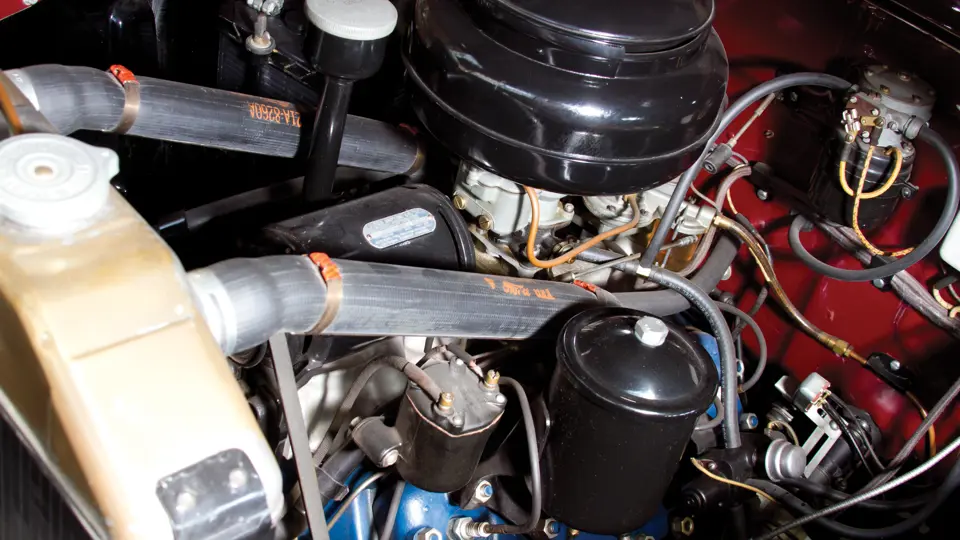


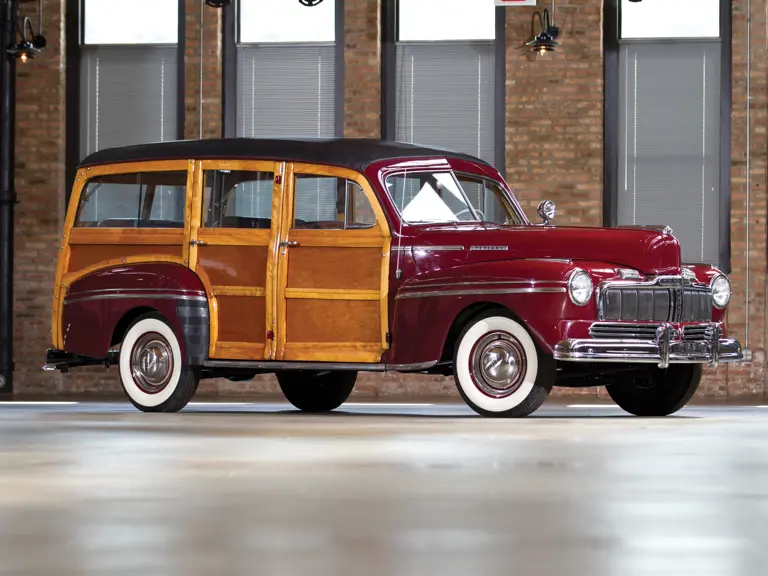
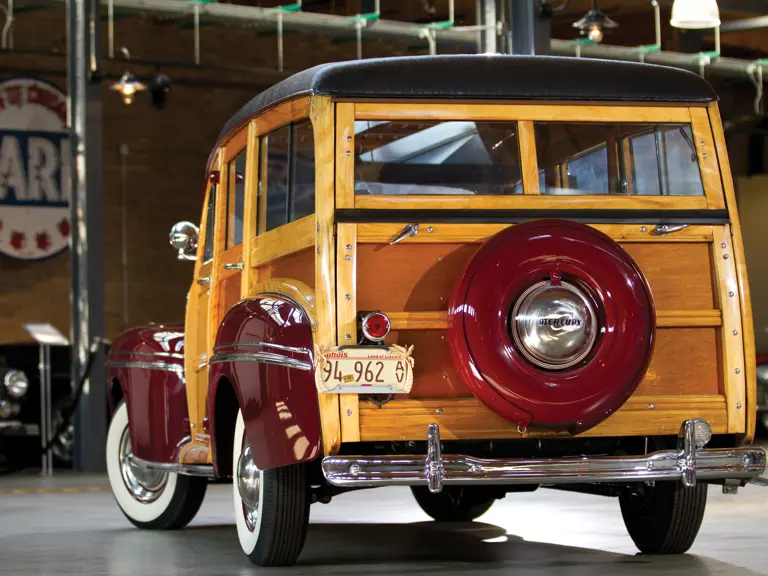

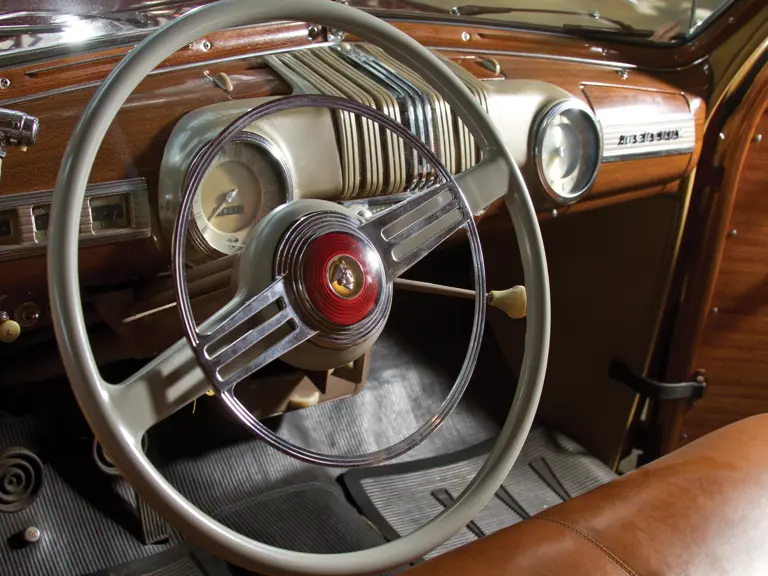
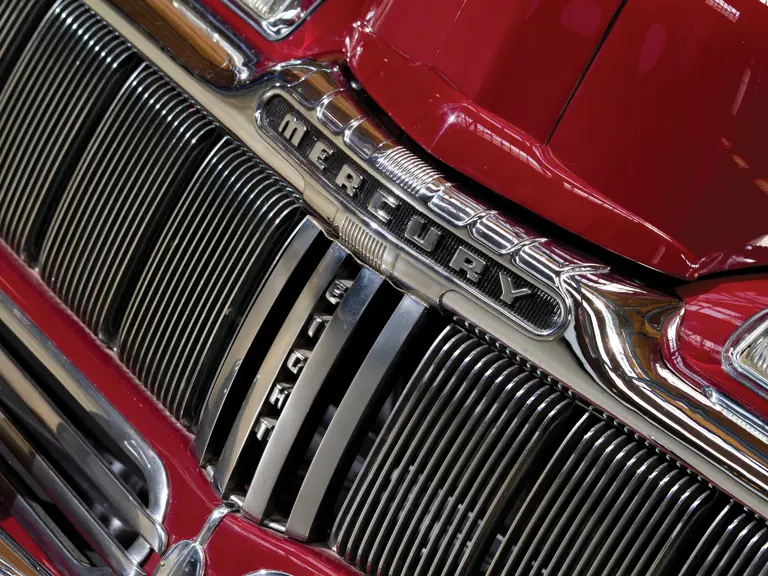
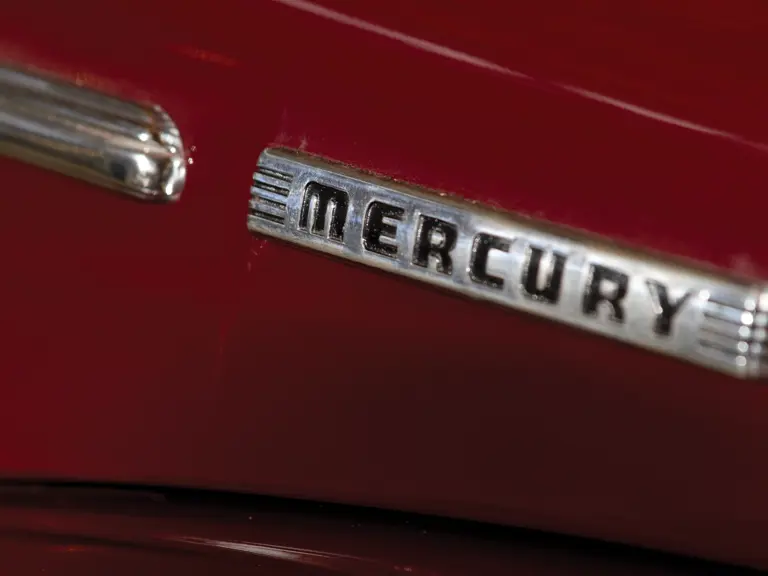
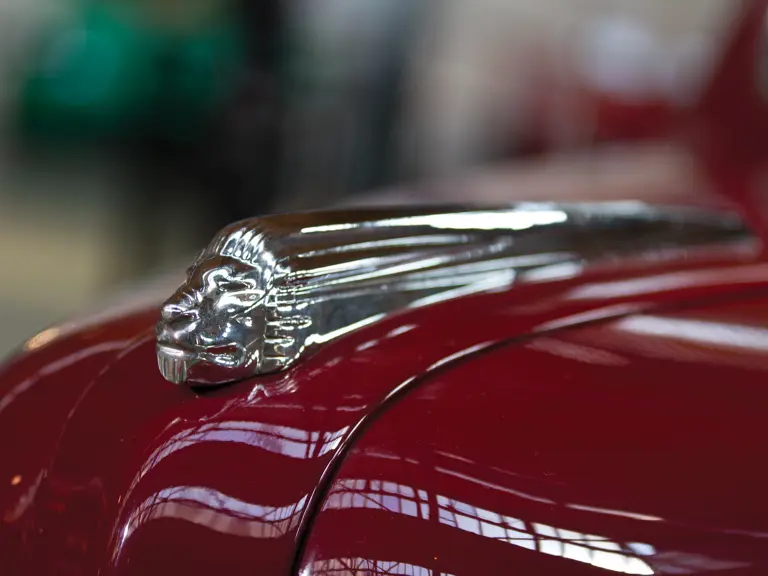


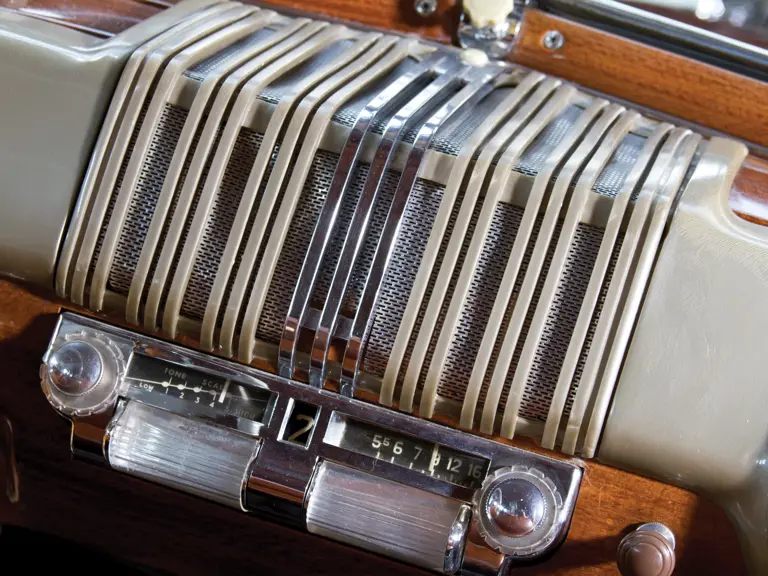
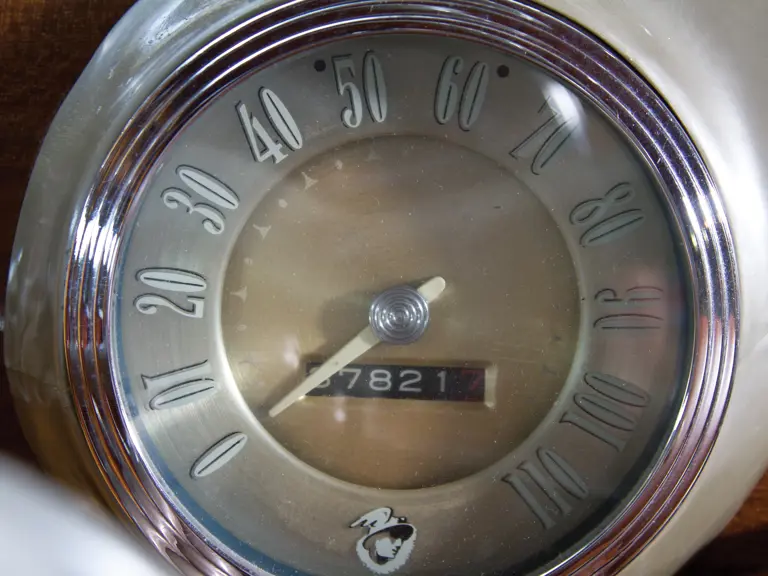


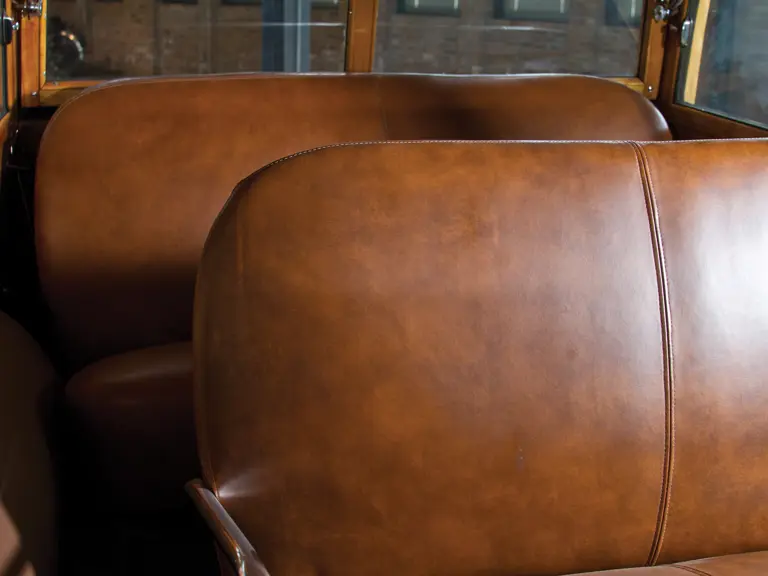
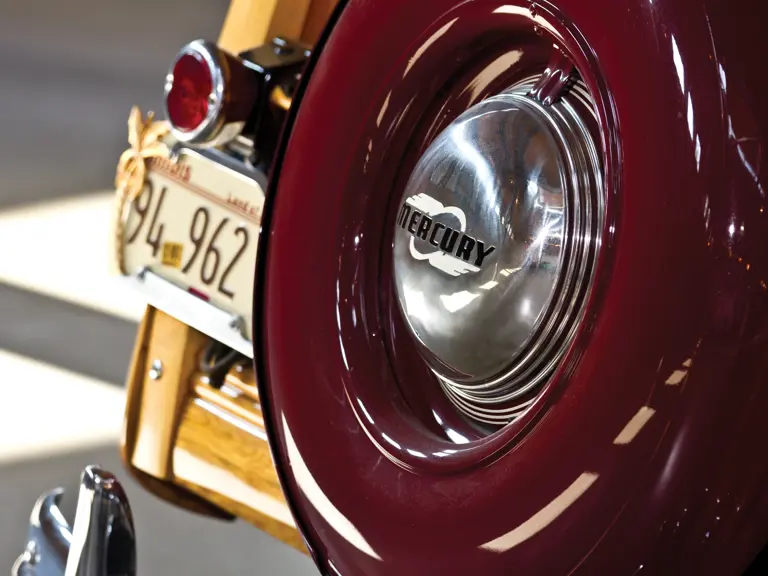
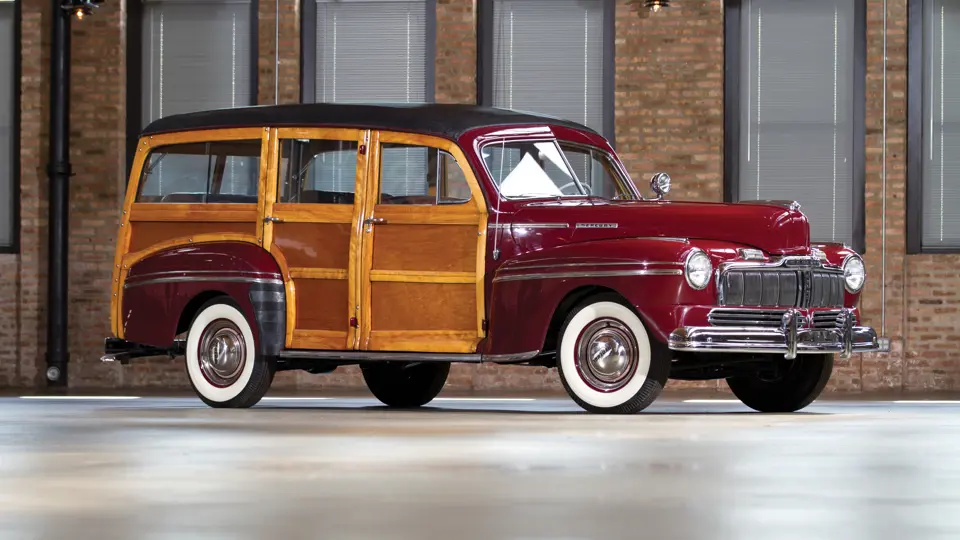
 | Monterey, California
| Monterey, California
